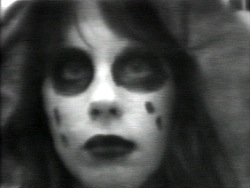TVTV
Biography
Adopting the tongue-in-cheek appellation Top Value Television, the influential video collective TVTV defined the radical video documentary movement of the 1970s that was known as "guerrilla television." TVTV subverted conventions of television news and documentary reportage with its alternative journalistic techniques, countercultural principles and pioneering use of portable, low-tech video equipment.
With its roots in the Vietnam-era climate of political revolt, TVTV's philosophy was articulated in founding member Michael Shamberg's 1971 manifesto Guerrilla Television, a treatise that advocated video and public-access cable systems as tools of opposition and activism. Guerrilla television was envisioned as a radical break from the ideology and technocratic control of broadcast television, a means to "demonstrate the potential of decentralized video technology."
Originally organized to provide alternative news coverage of the 1972 Republican and Democratic Presidential Conventions in Miami, TVTV was an ad hoc collective that at times included such videomakers as Skip Blumberg, Nancy Cain, Allen Rucker, Hudson Marquez, Michael Shamberg and Megan Williams. The group's ground-breaking coverage of the 1972 Conventions, which pioneered the use of portable, lightweight Portapak equipment as a news-gathering technique, resulted in the award-winning programs The World's Largest TV Studio and Four More Years.
These landmark documentaries, which introduced an innovative, behind-the-scenes approach to broadcast journalism, are also vivid time capsules of an era. "Instead of stand-up reportage or sit-down analysis we wanted to see if TV could cover politics by letting people and events speak for themselves," wrote a TVTV member. Their irreverent skepticism towards the political Establishment, and the access afforded by their low-tech, lightweight Portapak equipment, resulted in an irreverence and spontaneity that was unique in broadcast journalism. The candid, behind-the-scenes footage elicited by their use of portable video systems influenced commercial television's now-standard use of mobile ENG (electronic news gathering) reporting.
While TVTV's free-wheeling, subjective reportage and their debunking of the sacred cows of the political and media establishments were influenced by the New Journalism of the late 1960s and 1970s, the use of video as a vehicle for alternative communication was central to their project. TVTV production and editing crews included members of such video collectives as Raindance, Ant Farm, and Videofreex. In their coverage of political spectacles and media events, TVTV's signature techniques included deadpan, candid interviews, the use of such devices as fish-eye lenses and rudimentary graphics, and the absence of authoritative voiceover commentary.
TVTV's innovative verite journalism included an award-winning expose on the Guru Maharaj Ji and his followers, The Lord of the Universe (1974), which was the first Portapak video documentary produced for national television. Gerald Ford's America (1975), a four-part series on the "first one hundred days" of the Ford presidency, was commissioned by the Television Laboratory at WNET/Thirteen in New York, where the collective was "artist-in-residence." In the late 1970s, TVTV became less active in alternative political coverage and more involved with satirical television productions. TVTV disbanded in 1979.
